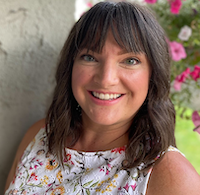
Snapshots are a pairing of two 20 minute presentations followed by a 5 minute Q & A.
This is presentation 1 of 2, scroll down to see more details.
Other presentations in this group:

CITES supports districts, educators, and families to ensure that students with disabilities are able to use the technology tools they need to foster learning and life success. In this session, the CITES team will support educators to:
1. Define what inclusive technology is.
2. Identify why inclusive technology is important to consider when designing systems.
2. Navigate resources and materials (aligned to ISTE Education Leader standards) to empower districts to build and sustain inclusive technology systems.
1. Build a common understanding of Inclusive Technology (10 minutes)
1.a What inclusive technology Looks Like, Feels Like, Sounds Like (video)
1.b Why inclusive technology is important (direct instruction with reflection prompts)
2. Introduction to CITES and our goals, as established by OSEP (5-7 minutes)
2.a Background of CITES and goals
2.b CITES Framework
2.c CITES Framework Alignment to ISTE Education Leader Standards
3. The How (5 minutes)
3.a High level overview of cites.cast.org and included resources to empower districts
4. Call to Action - The Future is Inclusive (3 minutes)
The CITES Framework is based on current research and understanding gained from the project’s Knowledge Development Districts. Knowledge Development districts serve as an exemplar in one or more areas of inclusive technology implementation.
CITES tests and refines the Framework practices in collaboration and co-development with Framework Development Districts. The Framework Development Districts made a long-term commitment with CITES to try out evidence-based practices and provide cyclical feedback on what works to build an inclusive technology ecosystem. What is learned together is informing the development of the CITES Framework.
Additional information on the CITES Framework Development process can be found at https://cites.cast.org/more/cites-framework-development-process